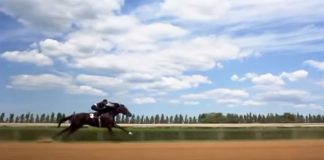Being around horses is hard work. Whether it’s in the saddle or at the barn, you’re using muscles and joints that many people rarely exercise. All of this effort inevitably leads to aches and pains. But how do you deal with these after the barn lights are turned off?
First-Aid Basics

Rest. It’s important to take it easy to avoid aggravating your injury and making it worse. Pain is a good indicator when it comes to determining how long you should rest.
If your ankle hurts when you put your foot in the stirrup, or if your wrist hurts when you hold the rein, it’s a good idea to give your body a little more time to heal.
Ice. If you suffered an acute injury, Rallie McAllister, M.D., a physician and lifelong horsewoman, says to apply ice for 20 minutes at a time. “If you apply ice for longer than 20 minutes, you can get frostbite,” she says. “You don’t want to damage the tissue; you just want to slow the swelling and reduce the blood flow to the area of the injury so you don’t get as much swelling and pain in the future.”
Twenty-four to 48 hours after your injury, you’ll want to switch to heat, since the risk of swelling is lower. Using heat increases blood supply; this will help dilute and remove toxins, while also providing more nutrients to the tissue to facilitate healing.
McAllister points out that certain injuries, such as sprains, might feel better with ice because they’re constantly reinjured and you continue to have swelling.
Muscle tears and strains tend to feel better with the application of mild heat.
Compression. “This summer I put up 1,000 bales of hay and got tendonitis in my elbow,” says McAllister. “Using an elbow sleeve was enormously helpful.”
Compression allows for support of the injured area and halts swelling that could result in loss of motion in an injured joint. For compression, McAllister says using any sleeve (or even Vetrap) will work.
Elevation. Elevation of an injured limb reduces swelling, which, in turn, helps alleviate pain. It’s a good idea to elevate the injured limb immediately, and then periodically until the swelling is gone.
Click here for a checklist of supplies for first aid kits for horses and humans >>
Saddle Sore
While you can’t really ice your seat, you can soak in a warm tub with Epsom salts.
McAllister points out that typically it’s a day or two after the initial strain or trauma that you might feel the worst. Either a buildup of lactic acid or micro tears in the muscles can cause the post-exercise pain.
To rid your body of the lactic acid, McAllister recommends drinking plenty of fluids to flush it from your body. Just remember, healing injured muscles takes time.
Other options McAllister recommends to battle the post-injury or -exercise soreness include:
Cherry juice: A study in the British Journal of Sports Medicine reported that tart cherry juice can help reduce muscle pain. Drink a glass before your ride or workout, and continue to drink some for the next couple of days.
Capsaicin: Muscle rubs that have capsaicin work by first stimulating and then decreasing the intensity of the pain signals in your body.
Caffeine: The University of Georgia did a study that has shown that if you drink two cups of caffeinated coffee before your workout, it will reduce your pain better than taking an NSAID. Unfortunately, this does not work if you are a habitual caffeine consumer.
Ginseng: Daily consumption of ginseng has been shown to help with chronic aches and pains.
Sleep: Sleep is the only time our body is able to repair itself. After a grueling day in the saddle and at the barn, you can’t beat a good night’s sleep to help alleviate pain.

Horse people know all too well the toll physical labor takes on your body.
Prevention: The Best Medicine
The best course of action when it comes to dealing with pain is prevention. Be safe when riding by wearing a helmet. Wear appropriate footwear, even when you’re doing a quick barn chore.
“I broke two toes last year because I ran into the barn ‘just for one second’ not wearing the appropriate footwear,” says McAllister.
Also, just like you warm up your horse before going out to jump a round, give yourself time to warm up your own muscles before swinging your leg over your steed. Whether it’s an extended grooming session, longeing your horse, or just doing chores, your muscles will be more pliable with a short warm-up.
“Warm up before your ride or workout, then stretch afterward,” says McAllister. “Getting your muscles warm means you’ll be less prone to stress or injury. If you’ve been sitting in the office all day and arrive at the barn and immediately get on your horse, there’s more likelihood you’ll be injured.”
Of course, if any ache or pain has not subsided after a few days, McAllister says it’s time to call the doctor. “We take far better care of our horses than ourselves,” she says. “We call a vet if our horse strains a tendon, but if it’s just us, we rub some dirt on it and keep going. We need to take better care of ourselves, as well.”
Megan Arszman is a freelance writer based in Indiana, where she’s learning to balance motherhood with horses, dogs, and writing.
This article originally appeared in the April 2016 issue of Horse Illustrated magazine. Click here to subscribe!





